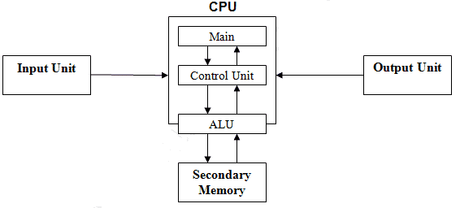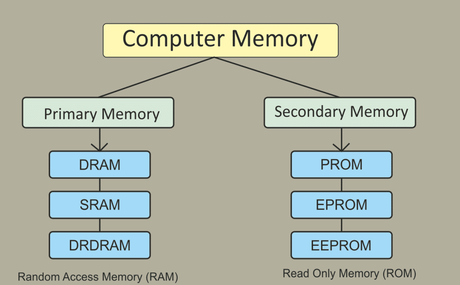In this tech era, Computer Basic Knowledge is altogether |one amongst|one in every of one among the foremost important section in all the Competitive, Campus Placement and Entrance exams for the state , Bank and IT Jobs. Sarkariexam Computer Knowledge is given the best computer-related questions cover all the topics asked in various Exams. This page consists of Computer Knowledge subcategories like Basics, arrangement, Internet, MS Excel, Software, Windows and other sections of basic knowledge in computer.

Basic knowledge in Computer
What is a Computer?
A Computer may be a General purpose machine, commonly consisting of digital systems, that accepts (inputs), stores, manipulates, and generates (outputs) data as numbers, text, graphics, voice, video files, or electrical signals, in accordance with instructions called a program.
General Basic Knowledge in computer
- Father of the computer – Charles Babbage.
- Father of the modern computer – Alan Turing.
- First Electronic Computer: ENIAC (1946) – J.P. Eckert & J.W. Mauchly.
- The first computer for the home user introduced – IBM in 1981.
- Basic Architecture of Computer: John Von Neumann (1947-49).
- First Programmer: Lady Ada Lovelace (1880).
Question About Above Basic Knowledge in computer
Who is the father of Computer?
Who is the father of Modern Computer?
What is the full form of computer?
Full form of Computer:
- C – Commonly
- O – Operated
- M – Machine
- P – Particularly
- U – Used for
- T – Technical
- E-Education
- R – Research
What are the Characteristics of Computer?
- Speed
- Accuracy
- Storage
- Diligence
- Versatility
- Automation
Computer General– An Introduction
- A computer is a device that can receive process and store data.
- However, all computers have several parts in common:
- Memory for storing commands and data.
- Monitor Process the information in the form of output.
- Input devices allow data and commands to the computer (Mouse, Keyboard etc.)
- Central Processing Unit which controls the processing.
Various Types of computer
There are various types available in computer in this technology era. There are supercomputers, very large computers with thousands of microprocessors that perform extremely complex calculations.
Desktop computers
- Desktop computers design is formed to be used at a desk or table.
- They are typically larger and more powerful than other sorts of personal computers.
- The main component, called the system unit, is typically an oblong case that sits on or underneath a desk.
- Other components, like the monitor, mouse, and keyboard, hook up with the system unit.
Laptops
- The Laptops are lightweight mobile PCs with a skinny screen.
- Laptops can operate batteries, so you’ll take them anywhere.
- Unlike desktops, laptops combine the CPU, screen, and keyboard during a single case.
- The screen folds down onto the keyboard when not in use.
Handheld computers (PDA)
- Handheld computers, also referred to as personal digital assistants (PDAs), are battery-power computers sufficiently
- small to hold almost anywhere.
- These are useful for scheduling appointments, storing addresses and phone numbers, and playing games.
- Some have advanced capabilities, like making telephone calls or accessing the web .
- Instead of keyboards, handheld computers have touch screens that you simply use together with your finger.
Peripheral Devices
- The peripheral connects to a computing system to feature functionality. Examples are a mouse, keyboard, monitor, printer and scanner.
- A peripheral may be a device that connects to a computer but isn’t a part of the core computer architecture.
- The core elements of a computer are the central processing unit, power supply, motherboard and therefore the computer
- case that contains those three components.
Types of Peripheral Devices
There are many peripheral devices, but they fall under three general categories:
Input devices, like a mouse and a keyboard
Output devices, like a monitor and a printer
Storage devices, like a tough drive or flash drive
Main Parts of Computer Basic Computer Knowledge
Hardware Parts
Computer hardware is what you’ll physically touch includes the pc case, monitor, keyboard, and mouse.
It also includes all the parts inside the pc case, like the hard disc drive, motherboard, video card, and lots of others.
Keyboard Parts
A Keyboard is that the most fundamental data input device for any computing system.
It helps to enter data on the pc.
Input Devices
In computing,data input device may be a peripheral (piece of hardware equipment) wont to provide data and control signals to an information science system.
It will control devices like a computer or information appliance.
Examples: keyboards, mice, scanners, digital cameras and joysticks.
Mouse Parts
A mouse is employed to input file by sending a sign to the pc, supported hovering the cursor and selecting with the left push button.
The left mouse acts as an ‘enter’ button. the proper push button are often selected and can often crop up a window of choices.
The scrolling wheel is employed to maneuver the view of the screen up or down.
By moving your mouse to a location during a document, on a digital photo or over a choice of music, you’ll click the left push button to put the cursor.
Trackballs
A trackball is data input device wont to enter motion data into computers or other electronic devices.
It serves an equivalent purpose as a mouse but is meant with a moveable ball on the highest , which may be rolled in any direction.
Instead of moving the entire device, you merely roll the moveable ball on top of the trackball unit together with your hand to get motion input.
Structure of CPU – Basic Knowledge of Computer

Input and Output devices
Input Devices – Basic Computer Knowledge
An input device feeds data to the pc system for processing.
We are getting to discuss the foremost commonly used input devices during this article.
Keyboard
The computer keyboard is to enter text information into the pc.
The main use of the keyboard is to type commands directing the pc to perform certain actions.
Mouse
A device that controls the movement of the cursor or pointer on a monitor .
A mouse may be a small object you’ll roll along a tough , flat surface.
The invention of the mouse is formed by Douglas Engelbart of Stanford research facility in 1963.
Joystick
Joysticks and similar game controllers also can be connected to a computer as pointing devices
Scanner
A scanner may be a device that images a printed page or graphics by digitizing it, producing a picture made from tiny pixels of various brightness and color values which are represented numerically and sent to the pc .
Scanners not only scan graphics, but they will also scan pages of text.
MIDI Devices
MIDI (Musical Instrument Digital Interface) may be a system design to transmit information between electronic musical instruments.
Trackball
The trackball is kind of like an upside-down mouse, with the ball located on top.
You use your fingers to roll the trackball, and internal rollers (similar to what’s inside a mouse) sense the motion which is transmitted to the pc.
Trackballs have the advantage over mice therein the body of the trackball remains stationary on your desk.
Graphics Tablet
A graphics tablet consists of an electronic writing area and a special “pen” that works with it.
A graphics tablet allows creating graphical images with motions and actions.
Output Devices : General Knowledge of computer
Monitor
Monitors, commonly called as Visual Display Unit (VDU), are the most output device of a computer.
It forms images from tiny dots, referred to as pixels that make an appointment during a sort of an oblong form.
The sharpness of the image depends upon the amount of pixels.
Printers
The printer is an output device, which is to print information on paper.
There are two sorts of printers:
Impact Printers
Non-Impact Printers
Plotters
A plotter may be a printer that interprets commands from a computer to form line drawings on paper with one or more automated pens.
Unlike a daily printer, the plotter can draw continuous point-to-point lines directly from vector graphics files or commands.
Projector
A projector or image projector is a device, which projects a picture (or moving images) onto a surface, commonly a screen.
Speakers
Speakers are one among the foremost common output devices with computer systems.
Some speakers are designed for work specifically with computers, while others are often attached to any sort of audio system.
Memory Parts: Basic Knowledge in computer

Memory is that the space for storing within the computer where data get the method and directions required for processing get store. The memory is split into an outsized number of small parts referred to as cells. Each location or cell features a unique address which varies from zero to memory size minus one.
Three types of memory
- Cache Memory
- Primary Memory
- Secondary Memory
Primary Memory (Main Memory)
- Primary memory holds only those data and directions on which pc is currently working.
- It has limited capacity and data is lost when power is transitioned .
- It is generally made from the semiconductor unit .
- The data and instruction require being processed reside in main memory.
There are two sub-categories ROM and RAM in Primary memory.
RAM :
The RAM (random access memory) is that the place during a computer where the OS , application programs, and data in current use are kept.
Q: What is the Full form of RAM?
RAM is far faster to read from and write to than the opposite sorts of storage during a computer, the hard disc , diskette , and CD-ROM.
It has two parts:
A. SRAM: Static Random Access Memory
B. DRAM: Dynamic Random Access Memory.
ROM:
As the name suggests ROM, stores information which will only be read. Modifying it’s impossible or very difficult.
ROM is additionally a kind of nonvolatile storage , which suggests that the knowledge in it stays albeit the pc loses power.
This is another sort of ROM that’s impossible or difficult to vary .
PROM – Programmable Read Only Memory.
EPROM – Erasable Programmable Read Only Memory.
EEPROM – Electrically Erasable Programmable Read Only Memory.
Cache Memory
Cache memory is a very high-speed semiconductor memory which can speed up CPU. It acts as a buffer between the CPU and main memory.
